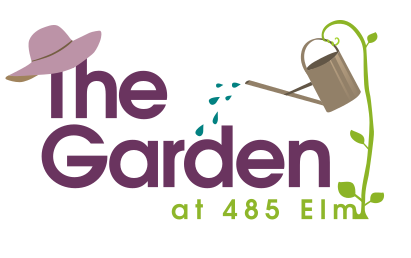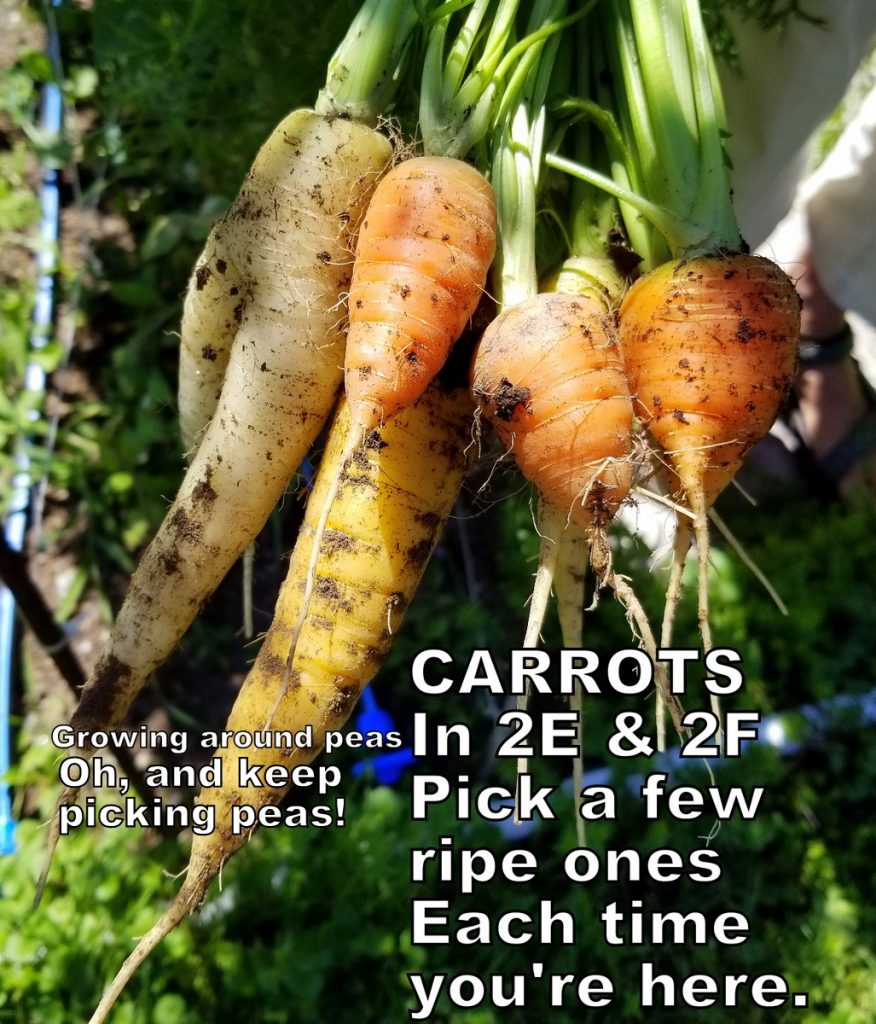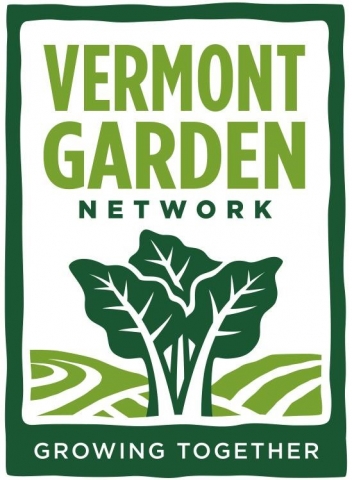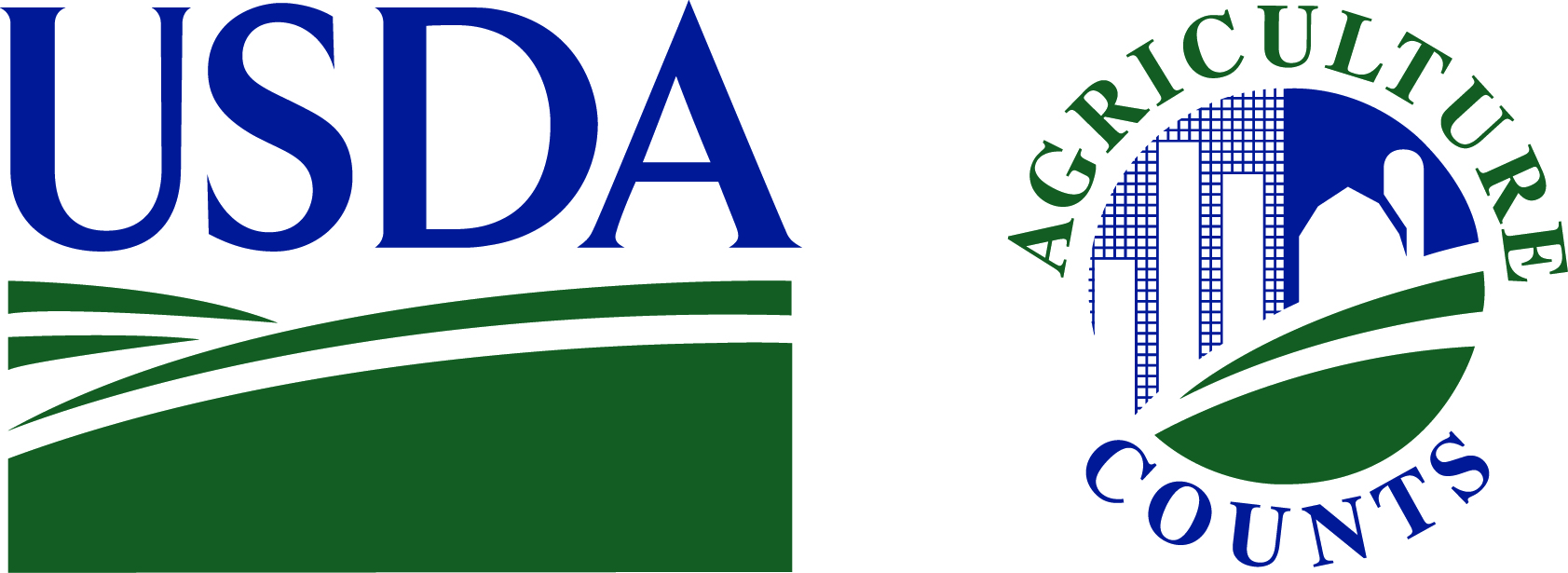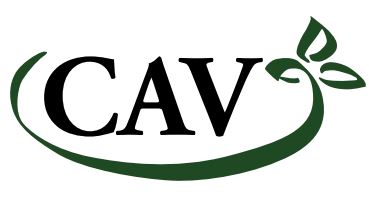In The Garden at 485 Elm, everyone grows all crops together. Everyone picks from the same beds of greens, the same tomato plants, the same herb boxes.
One of the most common questions about the garden is, “How do you divide the food shares?”
There’s plenty of food for all the gardeners here and our households. In fact, there’s so much food that during the more productive parts of the season, we donate food to free community lunches on Mondays at the Unitarian Church of Montpelier and on Wednesdays at the Christ Episcopal Church.
We grow a few “boutique” crops with more limited shares, such as celeriac, kohlrabi, and okra. When they’re ready to eat, we’ll let people know how much per gardener. But that’s the exception.
The rule is more like what follows . . .
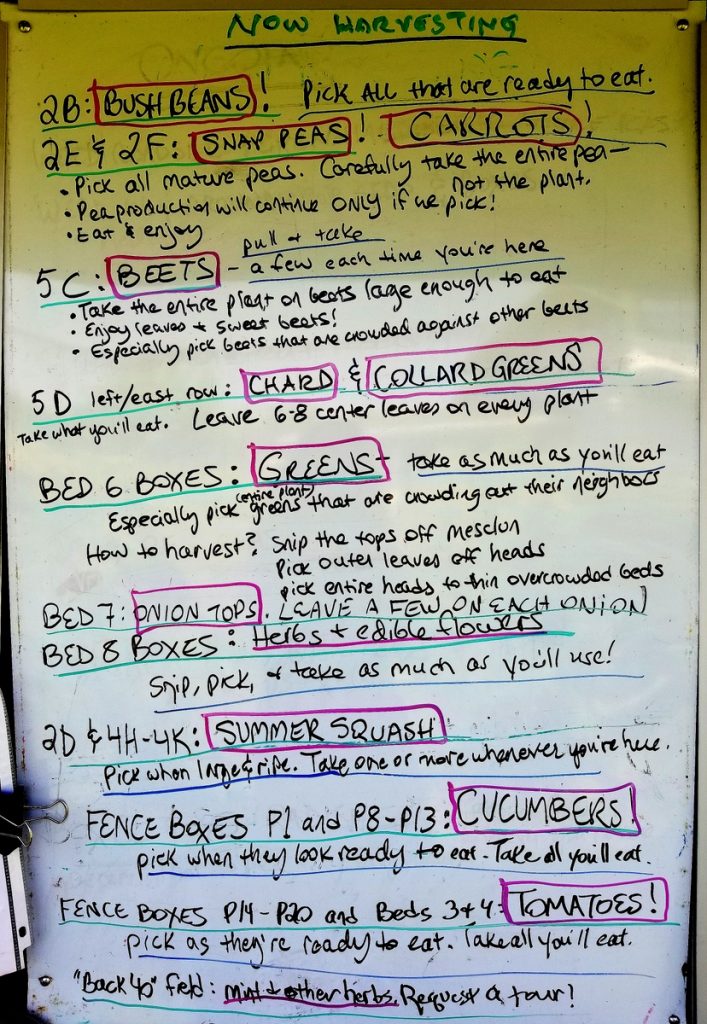
When gardeners arrive, they check the Now Harvesting white board. We list the name and location of each crop, as well as general harvesting guidelines.
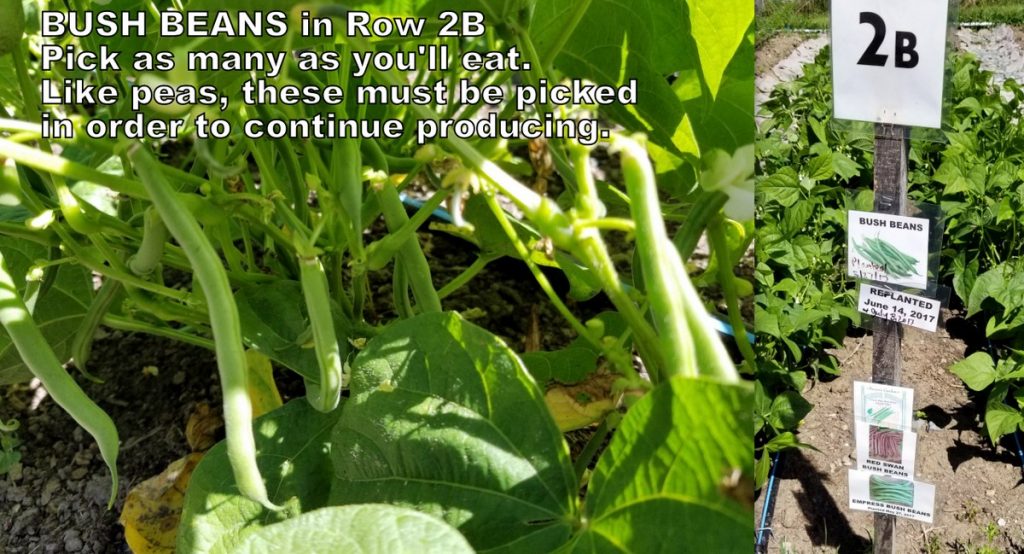
This season, we planted bush beans and pole beans four times before we finally saw promise of bean bounty. Other gardeners we talked with described something similar. Some attribute it to the long, cold, wet spring.
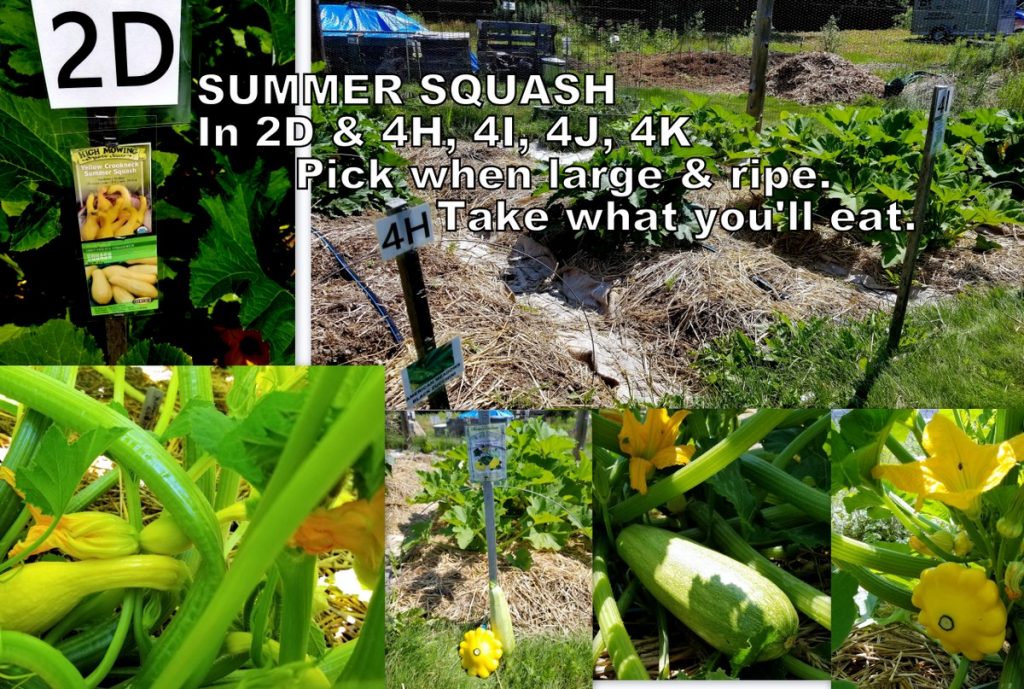
This season’s summer squash are shaping up to be our best ever! One of the gardeners here who became our squash captain suggested using row cover over the plants until they were so large they were pushing it off themselves. That seems to have done the trick. Not every plant survived, but the ones that did — wow.
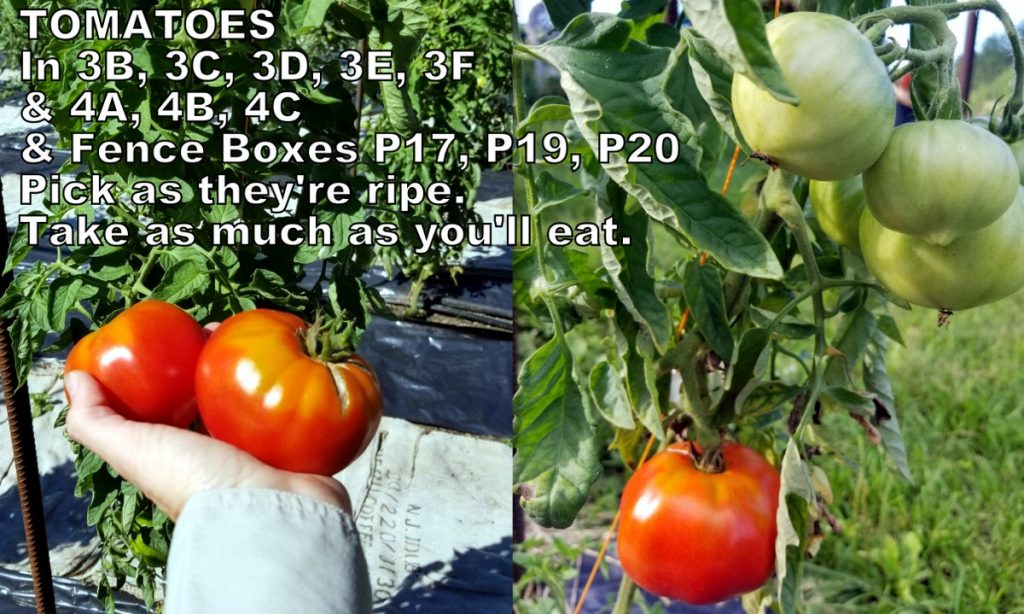
Tomato time is just beginning. A couple more are ripe each day. Soon, there will be more than we can keep up with.
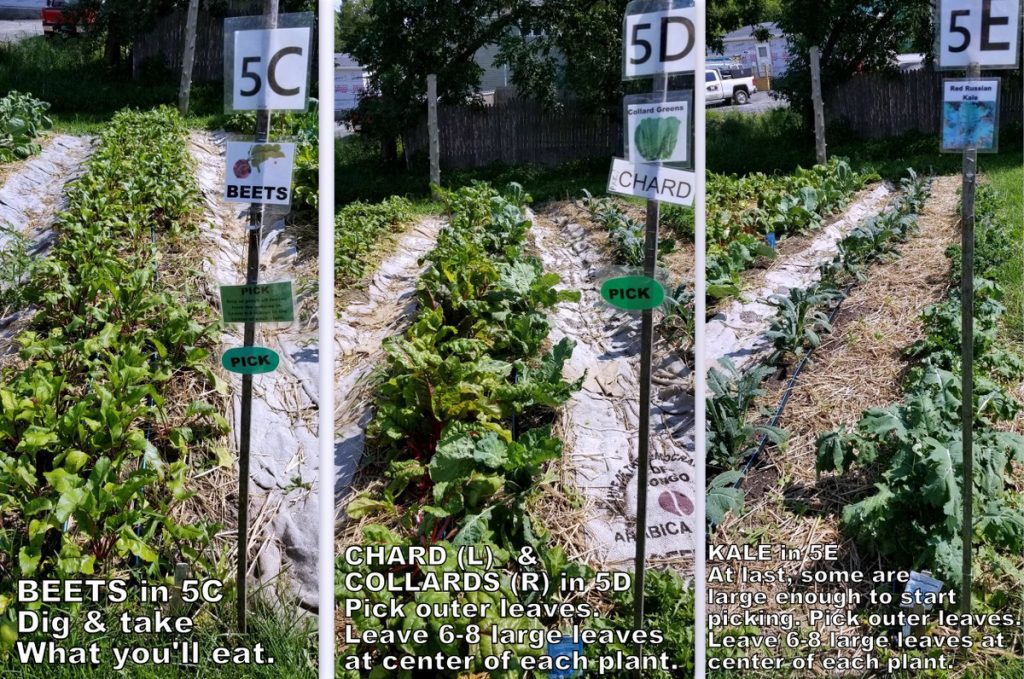
It was the Year of the Flea Beetle. Brassica were slow to start this season. At last, some of the kale is large enough to eat. We are enjoying tasty, hardy leafy greens.
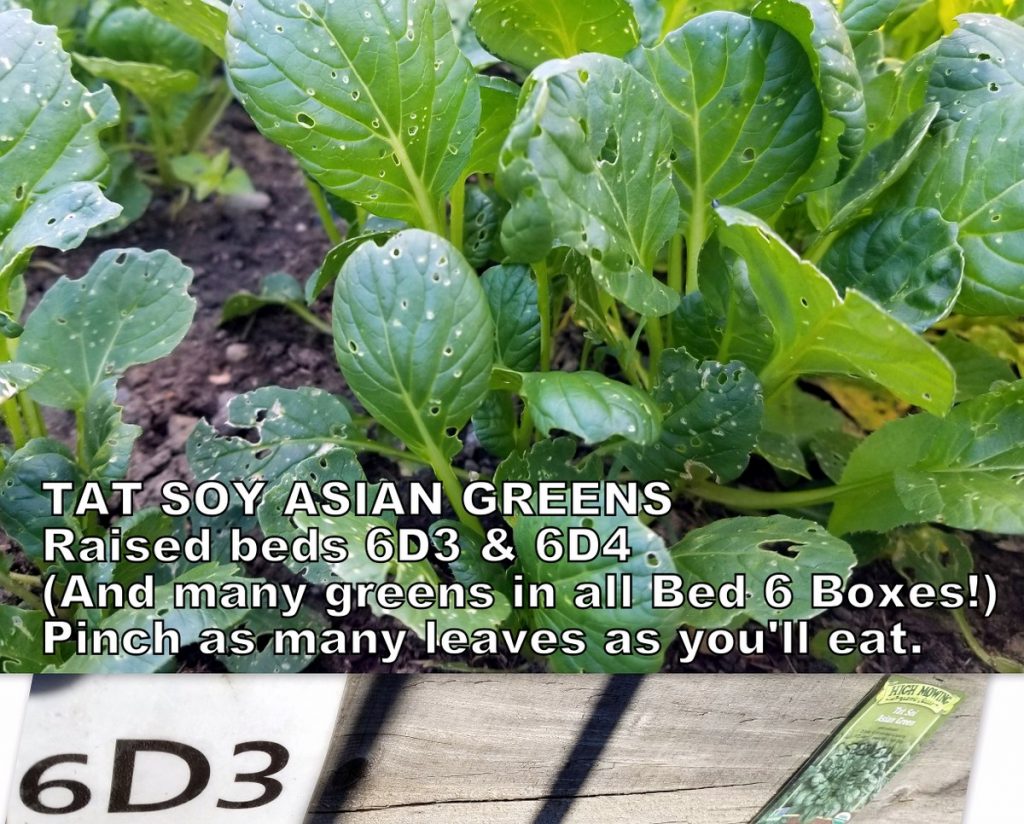
Bed 6 is all raised beds in hemlock boxes. As greens bolt or go to seed, we replant. There’s always a wide variety of salad and cookable greens to eat. These are the beds that contribute the most to food donations for local community lunches.
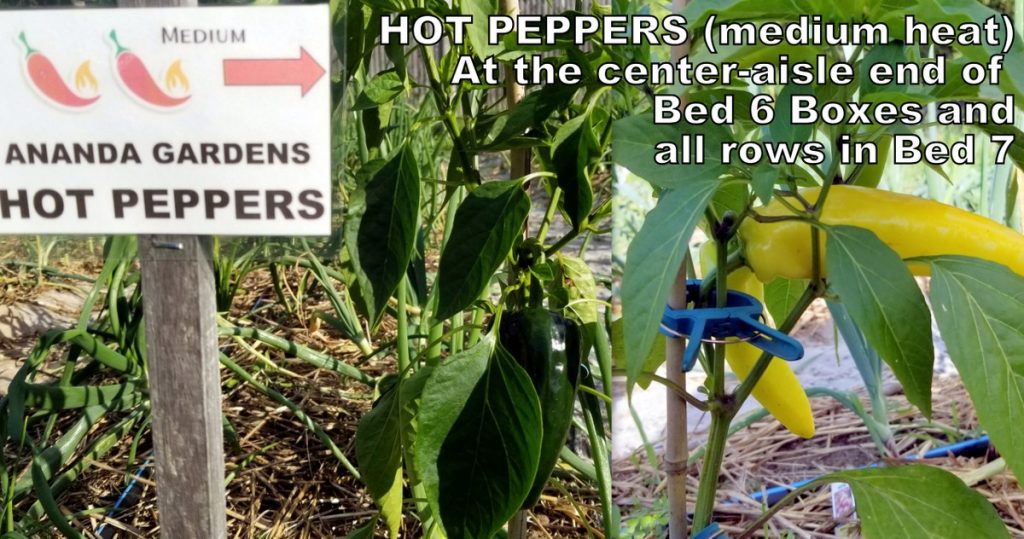
When we picked up our hot pepper seedlings from Ananda Gardens, there was no bed prepared for them. So we planted one pepper plant at the center walkway end of 11 rows.
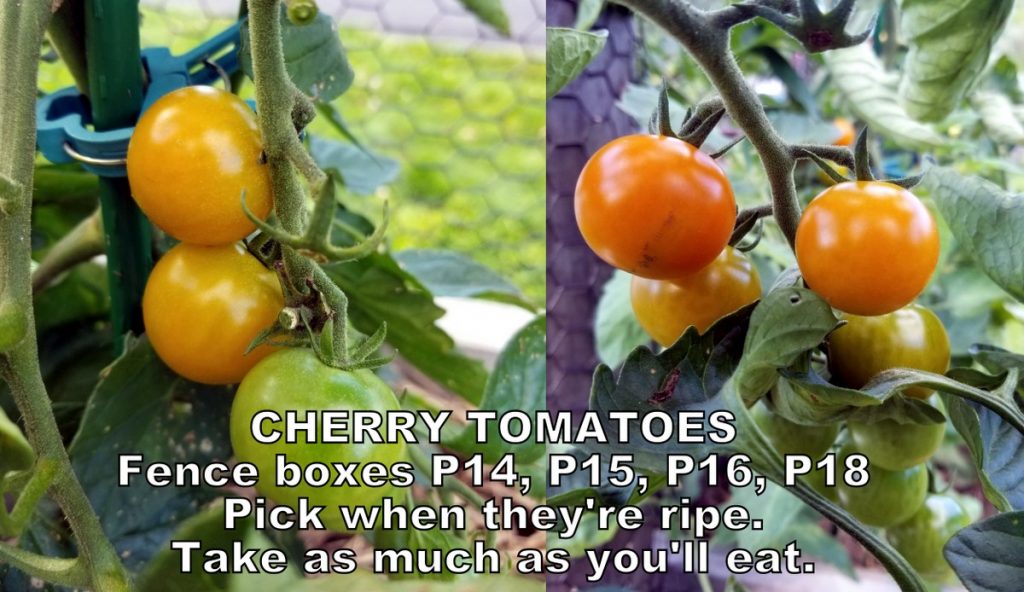
This season we planted Sungold cherry tomatoes from Ananda Gardens in boxes. The plants seem happy, and the little tomatoes are delicious.
